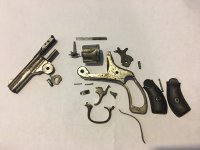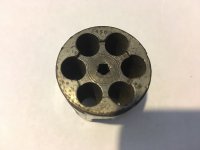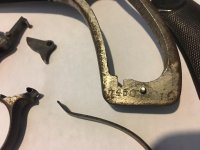Mobius_matt
Inactive
Hey guys. I am new here but I was reading threads on this style of top break guns and I felt this site had the most experience and could possibly point me in the right direction.
The simple story is a friend of mine inherited some guns after his father passed. Most are in great shape with the exception of this one. From what I am told he was in the process of restoring it. Now that he passed I would like to restore it for my friend. I know a decent amount about firearms but in this case I was just handed a bag of parts.
Any information would be appreciated.
. what model is it ?
. do i have all the parts (missing a pin)
. can it be put back together
. will it ever shoot again?
Any thoughts ???
The simple story is a friend of mine inherited some guns after his father passed. Most are in great shape with the exception of this one. From what I am told he was in the process of restoring it. Now that he passed I would like to restore it for my friend. I know a decent amount about firearms but in this case I was just handed a bag of parts.
Any information would be appreciated.
. what model is it ?
. do i have all the parts (missing a pin)
. can it be put back together
. will it ever shoot again?
Any thoughts ???



